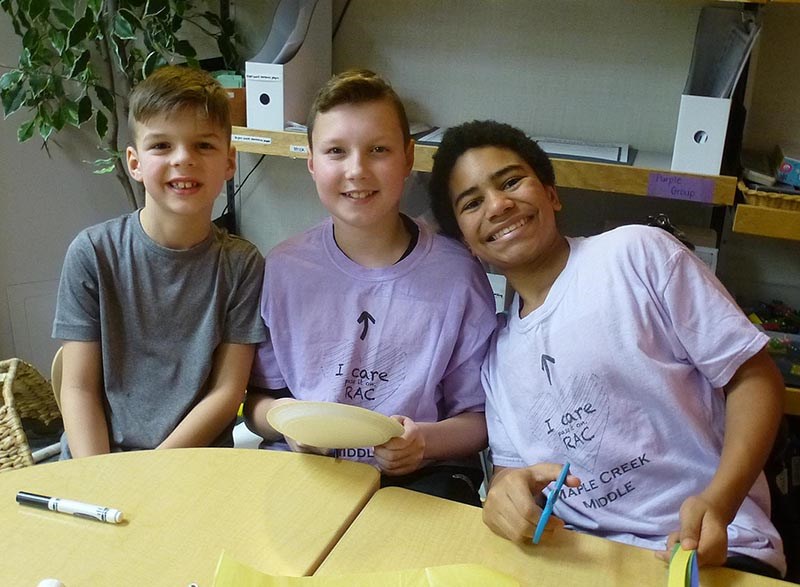School District 43 prides itself on being an early adopter of programs that teach children how to be kind and empathetic, solve problems in peaceful ways and do good deeds that benefit the community.
For years, it has been bringing dogs and babies into classrooms, organizing food drives and seniors' tea, and using various techniques such as talking circles, self-regulation, Me to We Day, social justice courses and Real Acts of Caring to help children better understand the world around them and the role they play in it.
But does all this kindness, generosity and do-gooding stop children from picking on one another and are classes in social responsibility, communication and collaboration creating a generation of more compassionate and sensitive children?
"I think the term bullying is an over-used and inaccurate term, it's a misunderstood term. What we would like to do is call the incident what it is — name calling, harassment, intimidation, or is it assault? — so we can intervene more appropriately," Rob Zambrano, assistant superintendent.
That is a difficult question to answer, says Rob Zambrano, a former Centennial secondary school principal and current assistant superintendent who has a quarter-of-a century of experience in schools under his belt.
But his simple answer is Yes.
"People say, 'Those darn kids' and I see that kids are really, really good. They seem to understand that our society's expectations for children are higher in some ways."
Here are some statistics that bear this out.
• Most serious suspension statistics have shown a 50% drop since 2008
• Few complaints come through the province's ERASE Bullying reporting tool — just two or three a year
* Most students, 79% or higher report feeling safe at school in most recent SD43 satisfaction survey
• Between 4% and 8% of students, depending on the grade, reported being bullied most or all of the time, with the higher grades reporting less bullying
This week, many businesses and community groups are promoting Stop Bullying Day or Pink Shirt Day, including SD43, but those donning pink shirts today might be surprised that the word "bullying" isn't commonly used to explain conflict behaviour between students.
"I think the term bullying is an over-used and inaccurate term, it's a misunderstood term," Zambrano said. "What we would like to do is call the incident what it is — name calling, harassment, intimidation, or is it assault? — so we can intervene more appropriately.
"What we try to do is ascertain what's occurring. Usually, it's just conflict."
Most of these conflict complaints are addressed at the school level, with a student reporting the problem to a trusted adult, such as school counsellor or administrator. An investigation is launched, with individuals and witnesses questioned to determine what happened. Sometimes, adults from outside the school are involved, such as parents or outside agencies — police and social workers.
MEDIATION CAN WORK
But for the most part, the goal is to get the parties involved to talk about the problem. In some cases, reparations can be made; mediation can work to bring students to an understanding; and occasionally, other consequences, are required, and they vary depending on the severity of the incident and the age of the students.
"It's not that we don't have consequences but our actions are complemented by other strategies," Zambrano said.
Indeed, it appears that the issue of bullying in school is much more complex than anti-bullying campaigns would suggest.
This doesn't surprise Zambrano, who believes that creating a safe and caring school involves many strategies and many people at different levels of the school system.
"The openness of our school staff — school counsellors, teachers, administrators — are willing to engage kids on a social and emotional level, and that's made a difference and that's a huge thing."
RESOURCES
What is Pink Shirt Day?
Anti-bullying day or pink shirt day is a day when people wear a pink shirt to symbolize a stand against bullying. The original event was organized in 2007, when two students, David Shepherd and Travis Price of Berwick, Nova Scotia bought and distributed pink shirts to support a Grade 9 student who was bullied for wearing a pink shirt on his first day of school.In 2008, the province of B.C. declared Pink Shirt Day and since then many businesses have been taking part in campaigns. This year the theme is spreading kindness.
• ERASEBullying continues to offer training to school districts, including SD43, and there is information and resources for parents, including how to keep kids safe online. Find out more here erasebullying.ca
• Youth can text 211 from 3-11 p.m. seven days a week, or can dial 211 24 hours a day, seven days a week. The multilingual service connects people to support and resources in their community.
• B.C.s new curriculum addresses bullying specifically in the physical health education subject. Find out more here: curriculum.gov.bc.ca
This is the second in a two-part series on how approaches to bullying have changed in School District 43.



